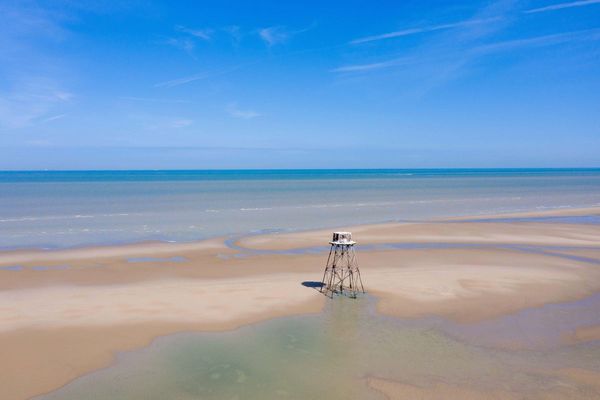
This is part four in a series about searching for solutions to the climate emergency. Read parts one, two, and three.
The ecosystems of oysters, the Dyson vacuums of the sea, are some of the most degraded environments in the world. Globally, 85% of oyster reefs have perished. In Australia, it’s a staggering 99% loss of native species due to settler seafaring (colonial fishing practices and dredging). Out of water, their plight has long fallen on deaf ears, but researchers have recently discovered that a bit of underwater noise goes a long way.
“People don’t think about the sound of the sea as a functional component of a healthy ocean, but it’s a really potent attractor to all manner of marine life — including oysters,” University of Adelaide oyster ecologist Dr Dominic McAfee told Crikey.
McAfee is leading a team of researchers making waves (literally) with an underwater speaker system that speaks (through the musical tongue of the ocean) to oysters.
Placed in 10 sites across two of the largest oyster restoration reefs in South Australia, the speakers draw between 5000-17,000 additional baby oysters per square meter. A single oyster in a single day can filter up to 200 litres of seawater. Scale it up, and that’s millions more oysters per reef to inhale and purify the forbidden fruits of the sea (CO2, nitrogen… pick your poison). It’s a sound recipe for a healthy ocean.
Let’s listen in.
The underwater Pied Piper
As a member of the invertebrate mollusc family, oysters (alongside clams and mussels) have a reputation for immobility. While an oyster in a shell is a certifiable homebody, the researchers found that those without assets (larvae looking for somewhere nice to raise themselves) have the capacity to move, hopping in and out of ocean currents by moderating their height. When there’s music in the mix — particularly the niche underwater sub-genre of “reef soundscape” — the oysters “actively swam” towards it.
“When we say music, us humans like to think of Pearl Jam. But we play the natural sounds of the sea composed of all the different organisms going about their daily business: fish feeding, urchins rasping, and the chief culprit, snapping shrimp, that clap their claws to create an intense cracking sound like sizzling bacon,” McAfee said.
Oysters opt for a full sensory experience when selecting a spot to stop. They’re sensitive to light and can pick up the scent of a shell and perfume of another oyster at close range. But sound is a full-body experience for an oyster. It is less listening and more feeling (same as any music wonk will tell you). Scientifically it’s to do with particle displacement, but in practice oysters let the soundwaves radiate through them. They feel the music down to their core.
Who else is privy to the playlist?
The current speaker system services an area of 20 square metres. McAfee describes it as “budget” and bearing little resemblance to a typical speaker: “It’s a large piece of PVC plumbers piping which we cut about 50cm long and inside that we encase car batteries, a little computer called a Raspberry Pi and our speaker. We seal that and play our sounds at depth.”
These run for a little over a week, so it’s relatively resource intensive checking and changing them over. McAfee is confident the technology has the capacity to be scaled up and rolled out beyond reef restoration for commercial purposes, but oyster farmers say access to capital and volume (quantity not decibels) will be the biggest roadblocks.
“You can’t survive in the oyster industry without big volumes going through,” said Allan Bryant, general manager of South Australian pacific oyster producer Eyre Shellfish. Bryant also sent a bundle of baby oysters to McAfee’s University of Adelaide team for sound research.
“If you could develop reefs and reefs of native angasi [oysters] then it could have commercial application, but you would be competing against a Pacific oyster industry that is already well established.”
On the flip side, there’s the possibility that sea soundscapes draw in excessive and unwanted catch, but Bryant was indifferent to newcomers in his “natural nursery”.
“It’s all good for the ecosystem. When you’re out there and you’ve got big crabs running around your feet, dolphins, seaweed, fish, birds — none of this has an impact on farming, it just makes it a magnificent place to be.”
The risk for farmers like Byrant who deal with non-native oysters is that soundscapes will further the spread of feral oysters that spawn and spill over from farms.
McAfee says there is still a lot to learn about what sounds attract which species, what sounds do and do not apply to an oyster’s life cycle, and in what settings it’s appropriate to play audio: “Given that commercial seas are a soup pool of larvae looking for a place to live, we need to know where and when to use it and how to use it responsibly.”
A soundcheck to come for the acoustically inclined oyster. Stay tuned.







